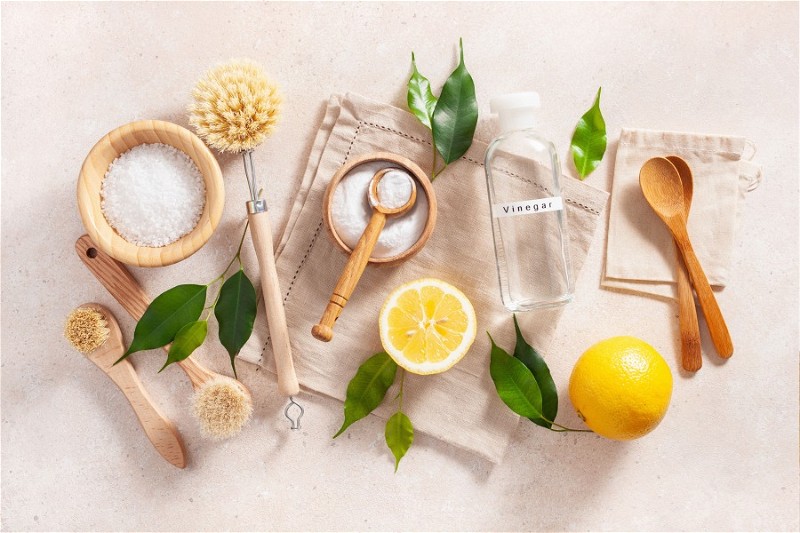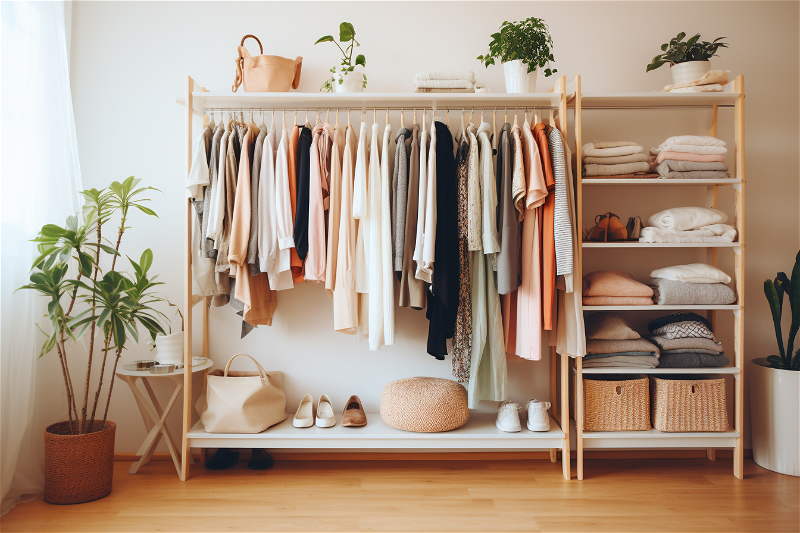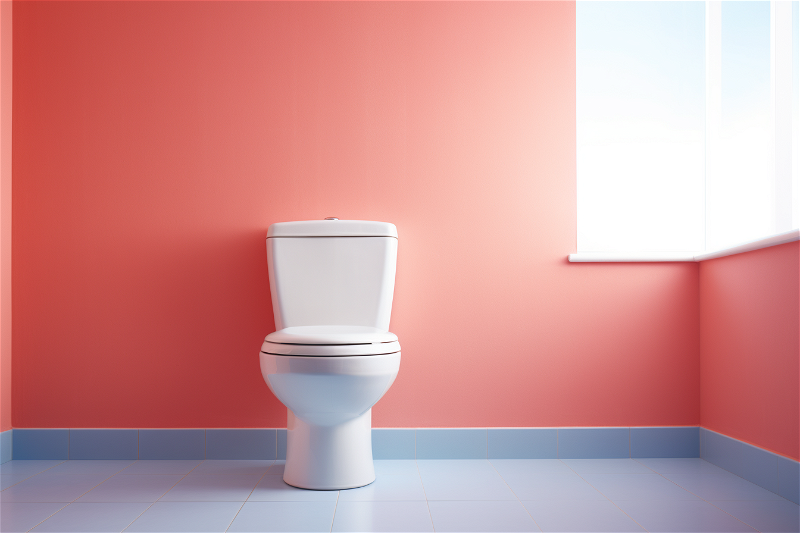
A clean and allergen-free home environment is crucial for maintaining good health and overall well-being. Allergens, such as dust mites, pet dander, and mold spores, can trigger allergic reactions and exacerbate respiratory conditions like asthma and allergies. For individuals sensitive to these allergens, reducing exposure becomes a priority in order to alleviate symptoms and improve quality of life.
Natural cleaning methods provide an effective and safe approach to reduce allergens in the home. Unlike conventional cleaning products that often contain harsh chemicals and artificial fragrances, natural cleaning solutions rely on simple, non-toxic ingredients that are environmentally friendly and gentle on both humans and pets. By adopting natural cleaning practices, you can create a healthier living space that minimizes allergens while also reducing the risk of harmful chemical exposure.
In this article, we will delve into the world of natural cleaning and explore how it can help relieve allergies and create a cleaner, healthier home environment. We will discuss common indoor allergens and their impact on our health, as well as the benefits of using natural cleaning methods. You will discover essential tips for allergy-friendly cleaning, including effective techniques for removing dust, managing pet dander, and combating mold. We will also explore natural cleaning products and ingredients that can be easily incorporated into your cleaning routine. By the end of this article, you will have the knowledge and tools necessary to implement natural cleaning practices that reduce allergens and promote allergy relief in your home.
Understanding Common Allergens in the Home
Indoor allergens are substances found in the home that can trigger allergic reactions in sensitive individuals. Some of the most common indoor allergens include dust mites, pet dander, and mold spores.
Dust mites: Dust mites are microscopic organisms that thrive in warm and humid environments. They feed on dead skin cells and are commonly found in bedding, upholstered furniture, carpets, and soft toys.
Pet dander: Pet dander refers to tiny flakes of skin shed by animals such as cats, dogs, and birds. It can become airborne and settle on surfaces throughout the home, triggering allergic reactions in susceptible individuals.
Mold spores: Mold spores are tiny reproductive units released by molds, which are fungi that grow in damp areas of the home. When inhaled, mold spores can cause allergic reactions and respiratory issues.
Exposure to indoor allergens can lead to a range of symptoms, including:
- Sneezing and nasal congestion
- Itchy or watery eyes
- Coughing and wheezing
- Skin rashes and irritation
- Shortness of breath and difficulty breathing
These symptoms can vary in severity and may significantly impact an individual’s quality of life, sleep patterns, and overall health. Prolonged exposure to allergens can also contribute to the development of chronic respiratory conditions, such as asthma.
Maintaining a clean home through targeted cleaning practices is essential for reducing allergen exposure. Regular cleaning routines should focus on removing and minimizing the presence of allergens in specific areas where they are commonly found. By employing natural cleaning methods, you can effectively eliminate allergens while minimizing the use of harsh chemicals that may further exacerbate allergies or respiratory conditions.
In the following sections, we will explore the benefits of natural cleaning methods and provide practical tips and techniques for allergy-friendly cleaning. By adopting these approaches, you can create a cleaner and healthier home environment, free from the burden of indoor allergens.
The Benefits of Natural Cleaning Methods
One of the key benefits of natural cleaning methods is the avoidance of harsh chemicals commonly found in conventional cleaning products. Many commercial cleaners contain ingredients such as ammonia, chlorine, and synthetic fragrances, which can emit volatile organic compounds (VOCs) and contribute to indoor air pollution. Prolonged exposure to these chemicals may pose health risks, especially for individuals with respiratory conditions or chemical sensitivities. Natural cleaning methods, on the other hand, rely on gentle and non-toxic ingredients that are safer for both human health and the environment.
Natural cleaning methods contribute to a healthier environment by reducing the release of harmful chemicals into ecosystems. Conventional cleaning products often contain ingredients that are not biodegradable and can persist in waterways, negatively impacting aquatic life and the overall ecosystem. By opting for natural cleaning products, which are typically made from renewable resources and biodegradable ingredients, you can minimize your ecological footprint and promote a greener and more sustainable planet.
Another advantage of natural cleaning methods is their cost-effectiveness. Many natural cleaning ingredients, such as vinegar, baking soda, and lemon, are affordable and readily available in most households. By utilizing these common household items, you can save money on expensive commercial cleaning products while still achieving effective cleaning results. Additionally, homemade natural cleaning solutions can be easily prepared, allowing you to customize and tailor the cleaning products to your specific needs.
Essential Tips for Allergy-Friendly Cleaning
Removing dust effectively
- Dusting techniques for minimizing allergens: When dusting, use a damp cloth or microfiber cloth instead of dry dusting, as this helps to trap and remove dust particles more effectively. Start from higher surfaces and work your way down to prevent dust resettlement.
- Choosing natural dusting tools and solutions: Opt for natural dusting tools such as microfiber dusters or electrostatic cloths, which attract and capture dust without the need for additional chemicals. Avoid aerosol sprays and instead use natural solutions like diluted vinegar or water with a few drops of essential oil for a pleasant scent.
Managing pet dander
- Regular pet grooming and maintenance: Regularly groom your pets to minimize the amount of dander they shed. Brush them outside to prevent dander from spreading indoors and bathe them with hypoallergenic pet shampoos.
- Natural cleaning solutions for pet-related allergens: Use natural cleaning solutions to clean pet bedding, furniture, and other surfaces. Baking soda can be sprinkled on carpets before vacuuming to help absorb odors and dander.

Combating mold and mildew
- Identifying areas prone to mold growth: Regularly inspect areas in the home that are prone to moisture accumulation, such as bathrooms, kitchens, and basements. Address any leaks or water damage promptly to prevent mold growth.
- Natural remedies for mold removal and prevention: Vinegar, hydrogen peroxide, and tea tree oil are natural remedies that can be used to remove and prevent mold. Dilute these substances with water and apply them to affected areas, allowing them to sit before scrubbing away the mold.
If your Experiencing problems with Mould, you should check out our article about: How to Remove Mold from your home Easily
In the upcoming sections, we will explore natural cleaning products and ingredients that can be incorporated into your cleaning routine, as well as provide guidance on creating an allergy-friendly cleaning schedule for your home. By following these tips, you can establish an effective cleaning regimen that minimizes allergens and promotes a healthier living environment.
Natural Cleaning Products and Ingredients
Natural cleaning ingredients offer a safe and effective alternative to conventional cleaning products. Here are some commonly used natural cleaning ingredients:
- Vinegar: Vinegar is a versatile natural cleaner that has antibacterial properties and can effectively dissolve grease and grime. It can be used to clean windows, countertops, and bathroom fixtures. Dilute vinegar with water in a spray bottle for an easy-to-use cleaning solution.
- Baking soda: Baking soda is a natural deodorizer and gentle abrasive that can help remove stains and odors. It can be used to clean sinks, toilets, and cutting boards. Sprinkle baking soda on surfaces, scrub, and rinse with water.
- Lemon: Lemon is a natural disinfectant and can help remove tough stains and soap scum. It also leaves a fresh scent. Use lemon juice or cut a lemon in half and rub it directly on surfaces or mix it with water for a cleaning solution.

Homemade cleaning recipes for different surfaces and areas
- All-purpose cleaner: Mix equal parts water and vinegar in a spray bottle. This solution can be used on countertops, appliances, and surfaces throughout the house.
- Glass cleaner: Mix water, vinegar, and a few drops of lemon juice in a spray bottle. This mixture effectively cleans windows, mirrors, and glass surfaces without streaking.
- Bathroom cleaner: Create a paste by mixing baking soda and water. Apply it to the bathtub, sink, or tiles, and scrub with a sponge or brush. Rinse thoroughly to remove any residue.
- Floor cleaner: Combine equal parts water and vinegar, and add a few drops of essential oil for a pleasant scent. Use this solution to mop hardwood, tile, or laminate floors.
Commercially available natural cleaning products
If you prefer ready-made cleaning products, there are now numerous commercially available natural cleaning options on the market. Look for products that are certified as eco-friendly, biodegradable, and free from harsh chemicals. Read the ingredient labels to ensure they align with your preferences for natural cleaning. Some brands even offer refillable options to reduce packaging waste.
Creating an Allergy-Friendly Cleaning Routine
To maintain an allergy-friendly home, it’s essential to establish a regular cleaning routine. Create a cleaning schedule that outlines tasks to be performed daily, weekly, monthly, and seasonally. This schedule will help you stay organized and ensure that all areas of your home are regularly cleaned and maintained.
Room-by-room cleaning tips to minimize allergens:
- Bedroom: Wash bedding regularly in hot water to eliminate dust mites. Use allergen-proof covers for mattresses and pillows. Vacuum carpets, rugs, and upholstery frequently.
- Living areas: Dust surfaces with a damp cloth or microfiber cloth. Vacuum upholstered furniture and curtains to remove pet dander and dust. Keep windows and doors open for ventilation when weather permits.
- Kitchen: Clean countertops, sinks, and appliances with natural cleaners. Empty and clean the refrigerator regularly to prevent mold growth. Dispose of food waste promptly.
- Bathroom: Clean bathroom fixtures, tiles, and shower curtains with natural cleaners. Scrub away any mold or mildew. Use a ventilation fan or open windows to reduce humidity.
Maintaining good ventilation and indoor air quality
Proper ventilation is crucial for maintaining good indoor air quality and reducing allergens. Ensure that your home is well-ventilated by opening windows and using exhaust fans in areas prone to moisture, such as the kitchen and bathroom. Consider using air purifiers with HEPA filters to help remove allergens from the air. Regularly replace air filters in HVAC systems and vacuum cleaners.
By incorporating these natural cleaning products, homemade cleaning recipes, and maintaining an allergy-friendly cleaning routine, you can create a healthier living environment that minimizes allergens and promotes well-being for you and your family.
Additional Allergy Relief Measures
Proper laundering of bedding and upholstery is crucial for reducing allergens in your home. Wash sheets, pillowcases, and blankets weekly in hot water to eliminate dust mites and remove allergens. Use hypoallergenic laundry detergents that are free from fragrances and harsh chemicals. Additionally, vacuum upholstered furniture regularly, using a vacuum cleaner with a HEPA filter to effectively capture and remove allergens.
Allergen-proof covers, also known as dust mite encasements, create a barrier between you and allergens such as dust mites. These covers are made of tightly woven fabric that prevents allergens from penetrating, reducing your exposure while you sleep. Be sure to select covers that are specifically designed to be allergen-proof and wash them regularly according to the manufacturer’s instructions.
Maintaining proper humidity levels in your home is essential for controlling allergens. Dust mites and mold thrive in humid environments, so it’s important to keep humidity levels between 30% and 50%. Use dehumidifiers in damp areas such as basements and bathrooms to reduce moisture. Additionally, ensure proper ventilation in your home to prevent excess humidity buildup.
Concluding Your Allergy Worries
In conclusion, adopting natural cleaning methods is a powerful strategy for reducing allergens and promoting allergy relief in your home. By understanding common indoor allergens and their impact on health, you can take targeted measures to minimize their presence. The benefits of natural cleaning methods, including avoiding harsh chemicals, protecting the environment, and cost-effectiveness, make them an attractive option for allergy sufferers.
By incorporating natural cleaning products and ingredients, such as vinegar, baking soda, and lemon, you can create homemade cleaning solutions that effectively remove dirt, dust, and allergens from various surfaces and areas of your home. Additionally, commercially available natural cleaning products provide convenient options for those who prefer ready-made solutions.
Establishing an allergy-friendly cleaning routine, developing a cleaning schedule, and following room-by-room cleaning tips will ensure that all areas of your home receive regular attention and maintenance. Remember to prioritize proper ventilation and maintain good indoor air quality to further minimize allergens.
By implementing these natural cleaning practices, along with additional measures such as regular laundering of bedding and upholstery, using allergen-proof covers, and controlling humidity levels, you can create a cleaner, healthier home environment that promotes allergy relief and overall well-being for you and your family.






